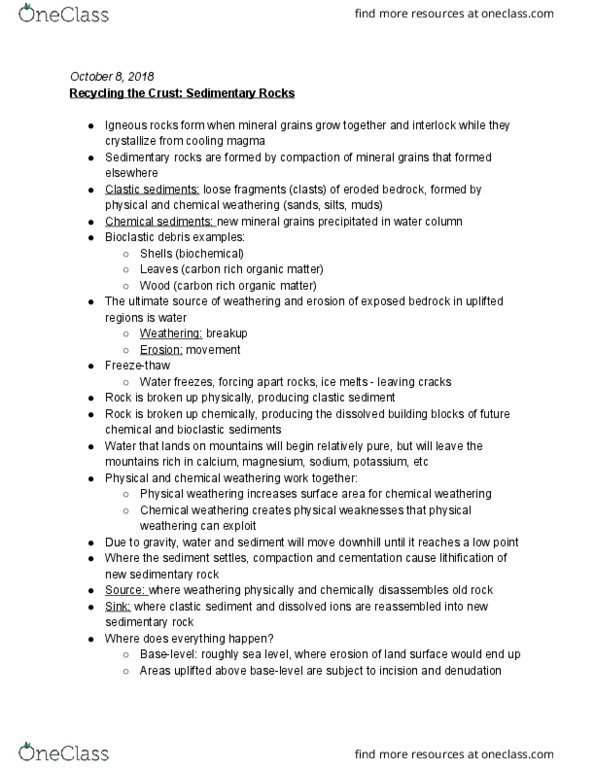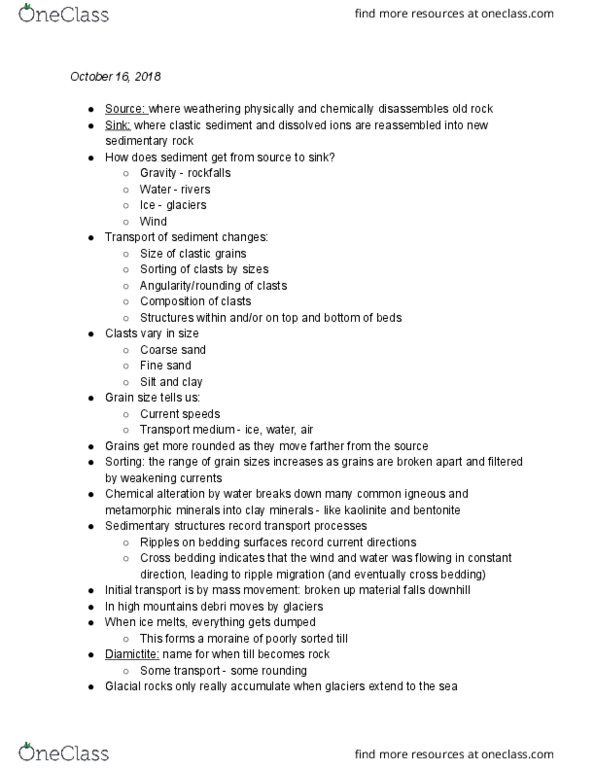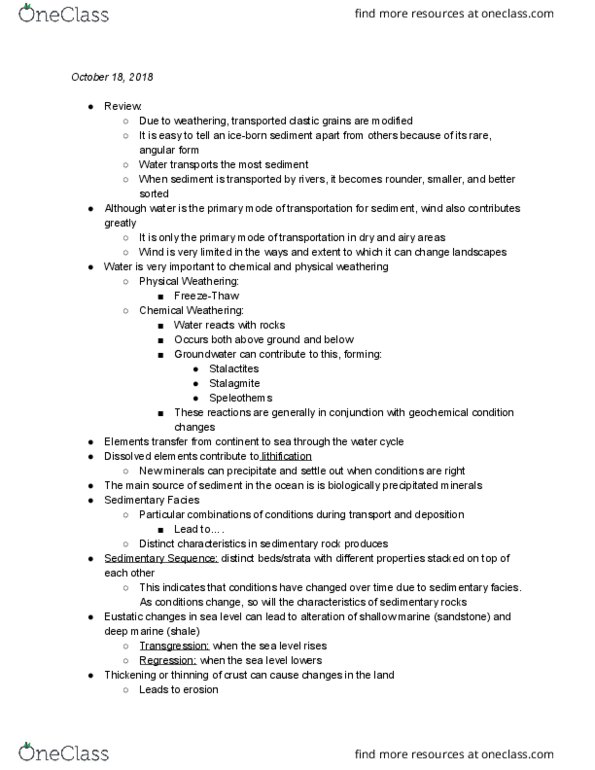GEOL 11040 Lecture Notes - Lecture 16: Clay Minerals, Cross-Bedding, Diamictite
GEOL 11040 verified notes
16/31View all
Document Summary
Source: where weathering physically and chemically disassembles old rock. Sink: where clastic sediment and dissolved ions are reassembled into new sedimentary rock. Structures within and/or on top and bottom of beds. Grains get more rounded as they move farther from the source. Sorting: the range of grain sizes increases as grains are broken apart and filtered by weakening currents. Chemical alteration by water breaks down many common igneous and metamorphic minerals into clay minerals - like kaolinite and bentonite. Ripples on bedding surfaces record current directions. Cross bedding indicates that the wind and water was flowing in constant direction, leading to ripple migration (and eventually cross bedding) Initial transport is by mass movement: broken up material falls downhill. In high mountains debri moves by glaciers. This forms a moraine of poorly sorted till. Diamictite: name for when till becomes rock. Glacial rocks only really accumulate when glaciers extend to the sea. Most transport is by rivers in places without ice/snow.




